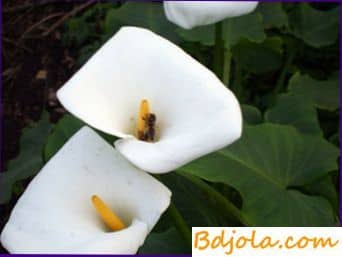Collection of nectar in the greenhouse

Honey and pollen are the natural food of adult bees and their brood. Feeds are necessary for maintaining the livelihoods of bees and isolating wax.
Flowers give off a small amount of nectar and pollen, in most cases counted in milligrams and its proportions. To collect 1 kg of honey, bees make 120-150 thousand flights, visiting several million flowers.
Scientists have established that only on themselves each bee family spends about 90-100 kg of honey per year, of which:
In wintering – 7-10 kg; for 2 months, when there is no honey, – 6-8;
Within 2 months of poor harvest – 37-40;
Within 1 month of strong honey harvest – 25-30 and for brood rearing and the allocation of wax – 12 kg.
A lot of pollen is required to grow the brood. To feed one bee larva, 0.09-0.15 g and more pollen is consumed, depending on the protein content in it, and the consumption of perga depends on the conditions and the period of its storage. During the season the bee family grows about 100 thousand bees, which consumes 15 kg of pollen. A lot of pollen is eaten by young bees, especially during the separation of wax. The annual requirement of a bee family in pollen and perge is about 30 kg.
Practically greenhouse bee families in most households are fed 10 to 20 kg of granulated sugar and about 4 to 5 kg of perga per family per year. The rest of the bee’s food is found outside the greenhouses. Pollen and nectar collected by bees from the pollinated culture (cucumbers) should not be taken into account, their number is so small that it has no practical significance. Therefore, all bee colonies, which are not used in the pollination of crops in greenhouses, must be taken out from the territory of the hothouse economy. But before arranging the reserve apiary and taking out the bees, the question arises: where is it located? Often apiaries are located in populated areas, sometimes far from the sources of early spring and main honey collector. In addition, in localities there are bees of local residents. The latter is convenient, since most of them work in production,
It is advisable to place a large reserve apiary with modern means of transportation no closer than 2-3 km from settlements, in the center of a good bee pasture, to 35-60 bee colonies at one point.
Collection of nectar in the greenhouse
